NASC Teros
The Teros is the largest, most sophisticated uncrewed aircraft in Raspet’s fleet. Built by the Navmar Applied Sciences Corporation, Teros has a payload capacity of 400 pounds and a flight endurance of up to 24 hours. Teros can support day and night operations, expanding mission capabilities for Raspet and our research partners.
BUILD & PERFORMANCE SPECIFICATIONS
- Length: 20’
- Wingspan: 40’
- Engine: 116 HP
- Max Gross Take Off Weight (GTOW): 1800 lbs
- Payload Capacity: 400 lbs
- Endurance: 20- 24 hours
- Max Speed: 140 mph
- Service Ceiling: 24,000 feet
NASC TigerShark XP3
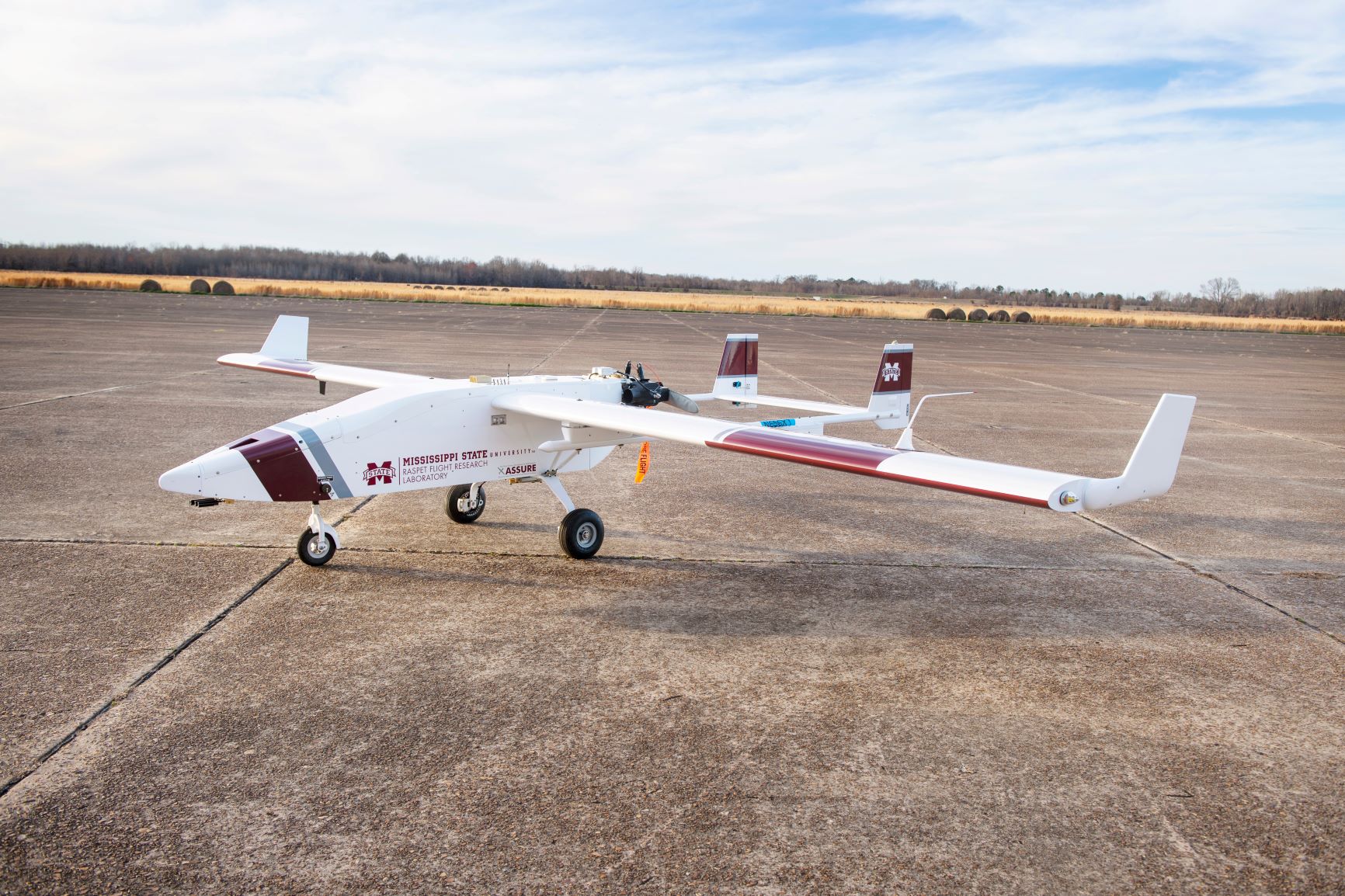
The TigerShark XP3 is an Unmanned Aircraft System (UAS) platform designed and built by the Navmar Applied Sciences Corp. It serves as a medium-altitude, long-endurance UAS in the Group 3 category that greatly expands the capabilities of Raspet's engineering and flight teams accommodating various types of payloads. The TigerShark is powered by a 32 horsepower Herbrandson engine and can carry a payload up to 95 pounds while capable of staying aloft up to eight-plus hours.
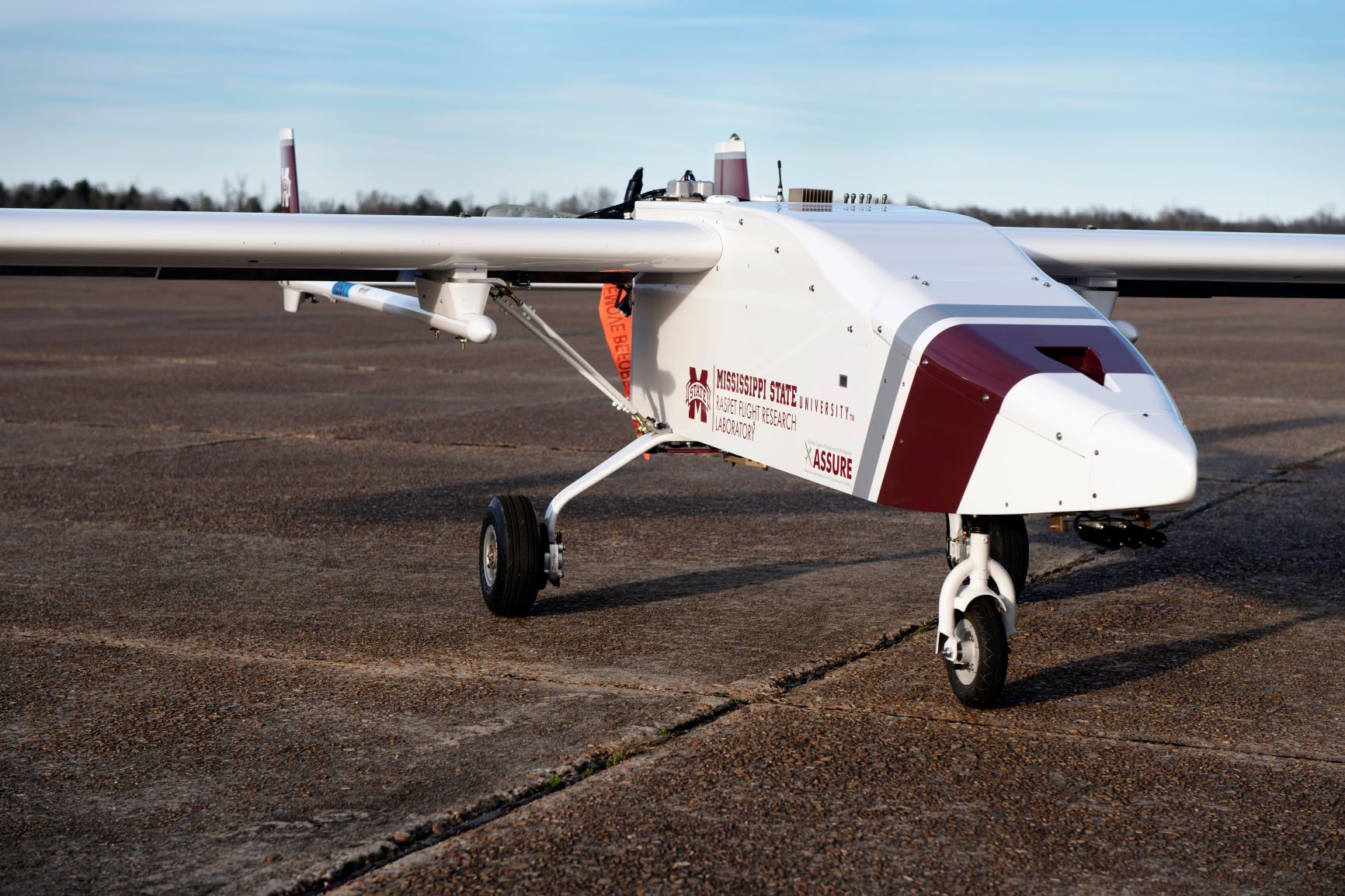
Build & Performance Specifications
- Length: 14 ft. 3 in.
- Height: 3 ft. 5 in.
- Wingspan: 21 ft. 3 in.
- Engine: Herbrandson 372cc., 32 hp
- Empty Weight: 300 lbs.
- Max Gross Take Off Weight (GTOW): 515 lbs.
- Payload Capacity: 95 lbs
- Endurance: 8-10 hours
- Max Speed: 80 kts
- Cruise Speed: 60 kts
- Service Ceiling: 15,000 ft MSL
Griffon Outlaw G2E
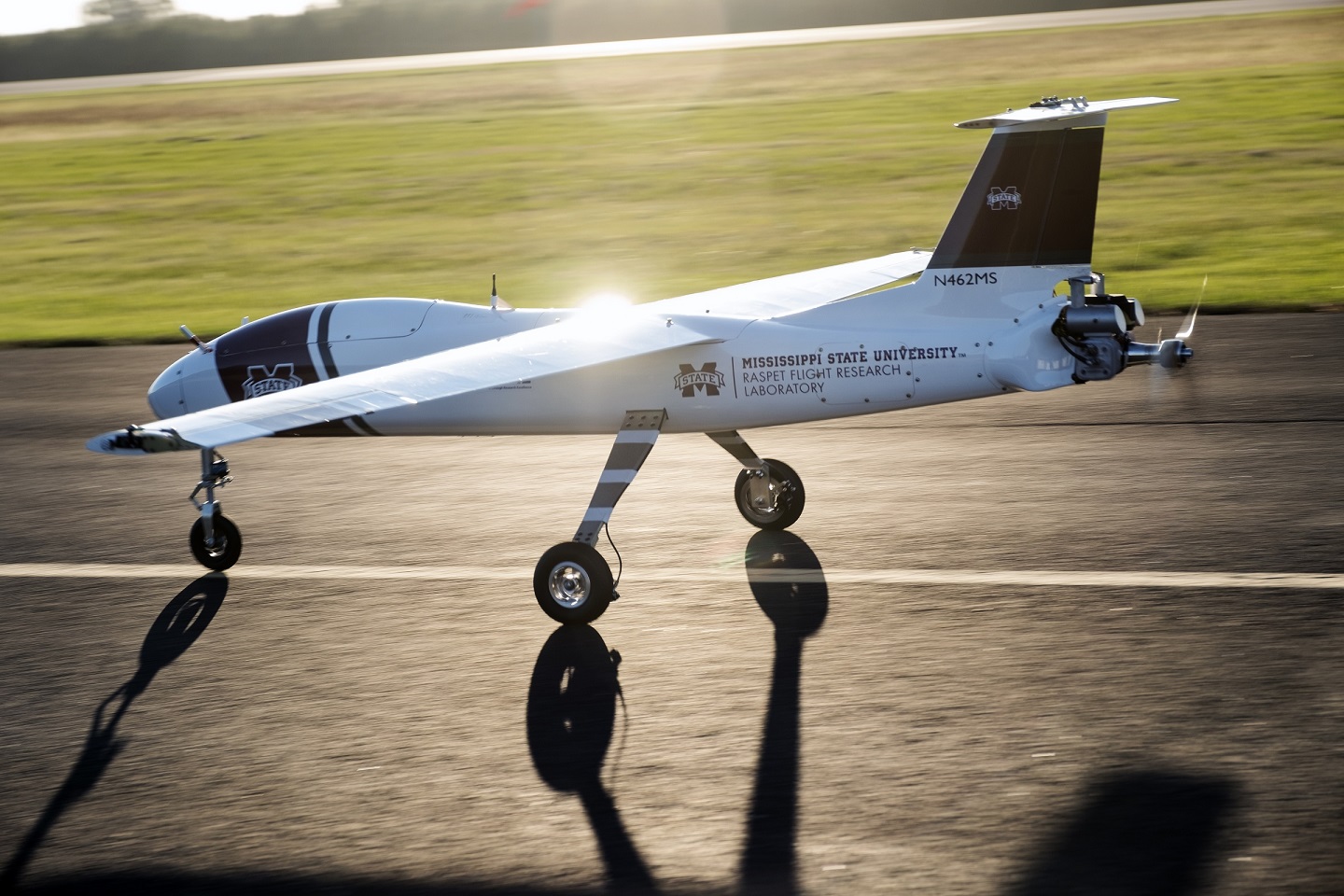
The Griffon Outlaw G2 was designed with high value payloads in mind. With a reliable, industry-proven engine platform, upgraded Electronic Fuel Injection (EFI) system, high aspect ratio wing design, and fixed steerable landing gear, the Outlaw G2E easily achieves sustainable flight operations for all variety of application-driven UAS research, testing and evaluation.
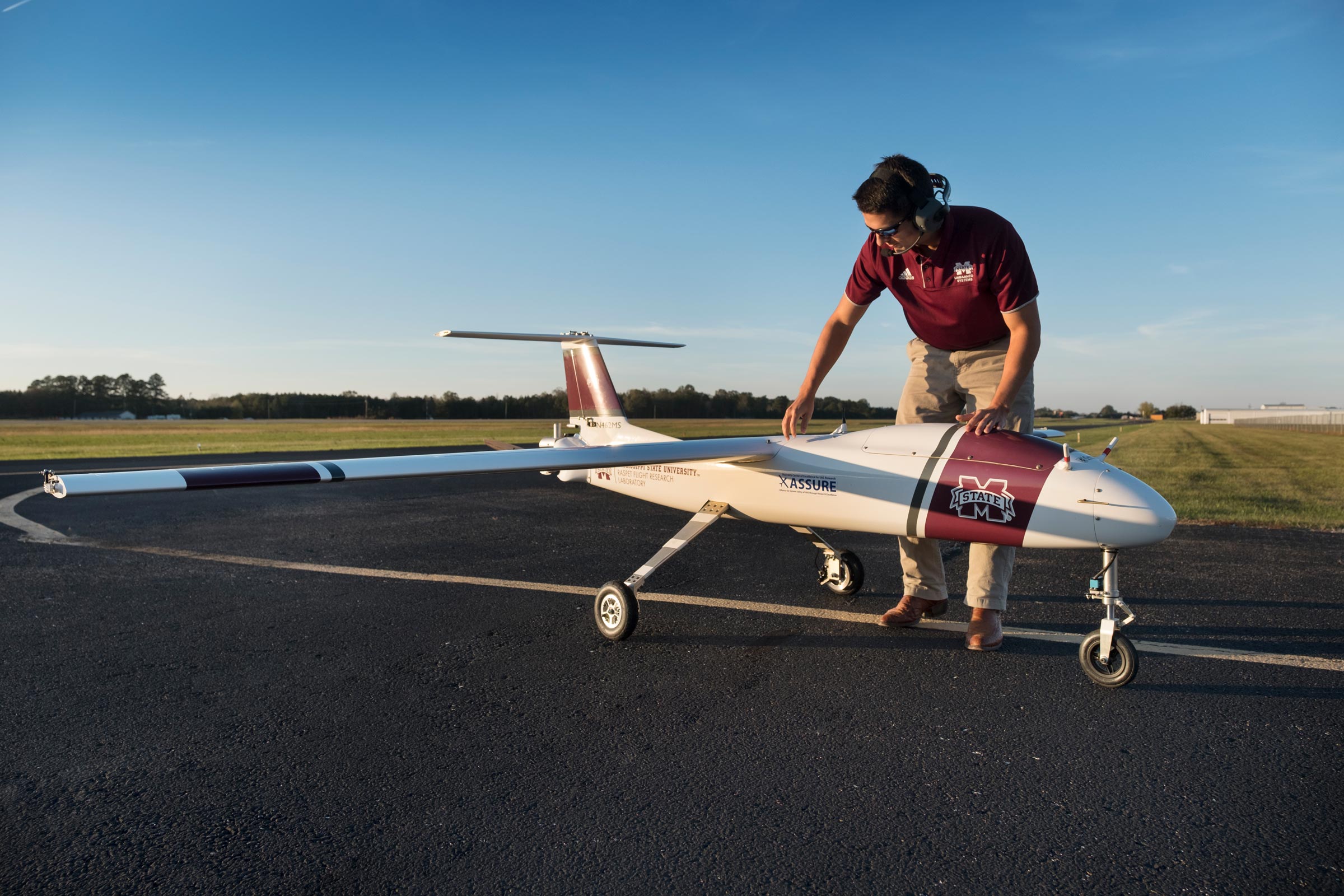
Aircraft Specifications
- Call sign: BULLY1 & BULLY2
- Length: 8.5 ft.
- Height: 2.5 ft.
- Wingspan: 14 ft.
- Engine: Desert Aircraft DA-150
- Empty Weight: 95 lbs.
- Max Gross Take Off Weight (GTOW): 160 lbs.
- Payload Capacity: 30 lbs.
- Endurance: 4-6 hours
- Max Speed: 85 kts
- Cruise Speed: 65 kts
- Service Ceiling: 15,000 ft. AGL
Boeing Stearman PT-17
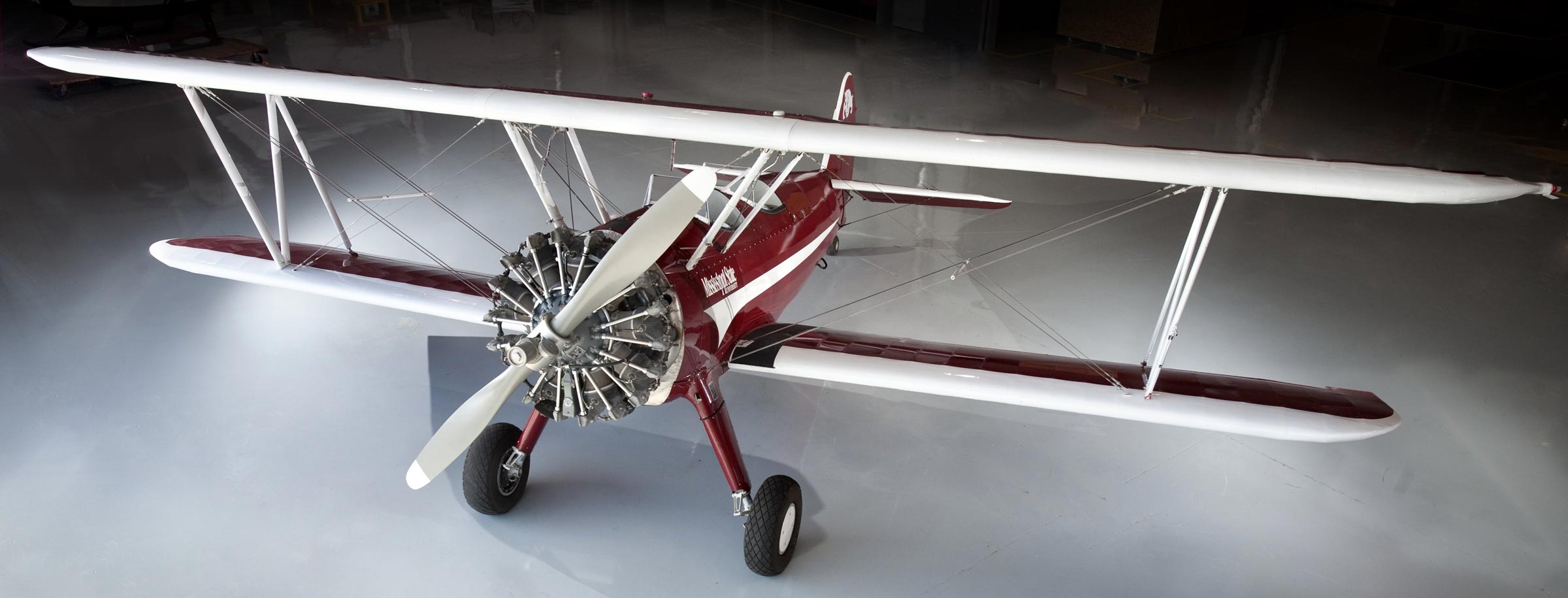
The Boeing Stearman PT-17 was built in 1942 and used as the primary training aircraft for the United States Army Corps. MSU acquired this aircraft in 1950 for use as a towing aircraft to research early-era sailplanes. Before coming to Raspet, the aircraft was upgraded with a 450 horsepower Pratt & Whitney R-985 radial engine and briefly used as a crop duster. The Boeing Stearman PT-17 continues to be used as a towing and experimental flight testing aircraft today and serves as the centerpiece of Raspet’s manned aircraft fleet while hangared.
Build & Performance Specifications
- Length: 24 ft. 9 in.
- Height: 9 ft. 8 in.
- Wingspan: 32 ft. 2 in.
- Engine: Pratt & Whitney R-985 Wasp 450hp
- Empty Weight: 1,931 lbs.
- Max Gross Take Off Weight: 2,635 lbs.
- Max Speed: 135 kts
- Cruise Speed: 100 kts
- Service Ceiling: 15,000 ft. AGL
Grumman (Gulfstream) American AA5B Tiger
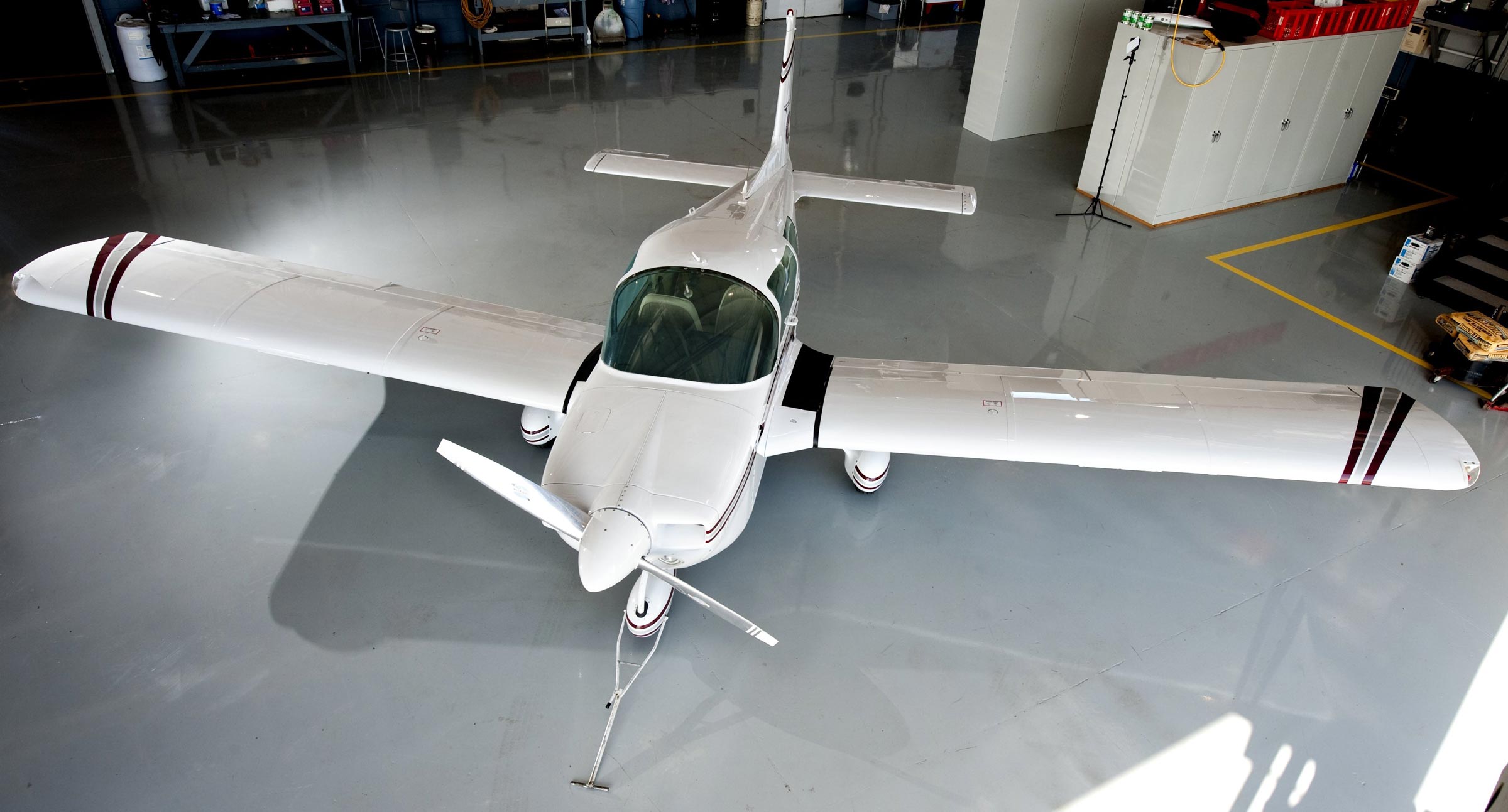
Raspet’s Grumman American Tiger was completed in 1976 as serial number AA5B-0001, the very first prototype of the Grumman American Tigers. The Tiger is a 4-place, low-wing monoplane aircraft powered by an O-360 180 horsepower horizontally-opposed reciprocating engine. The airplane is used in the Aerospace Engineering curriculum to teach students the fundamentals of flight test engineering. Additionally, the Tiger is also used for a variety of research efforts, as well as a flight training and currency aircraft for Raspet flight crew members.
Build & Performance Specifications
- Length: 22 ft.
- Height: 8 ft.
- Wingspan: 31 ft. 5 in.
- Engine: Lycoming O-360 180hp
- Empty Weight: 1,398 lbs.
- Max Gross Take Off Weight: 2,200 lbs.
- Max Speed: 143 kts
- Cruise Speed: 139 kts
- Service Ceiling: 13,800 ft. AGL
Cessna L319
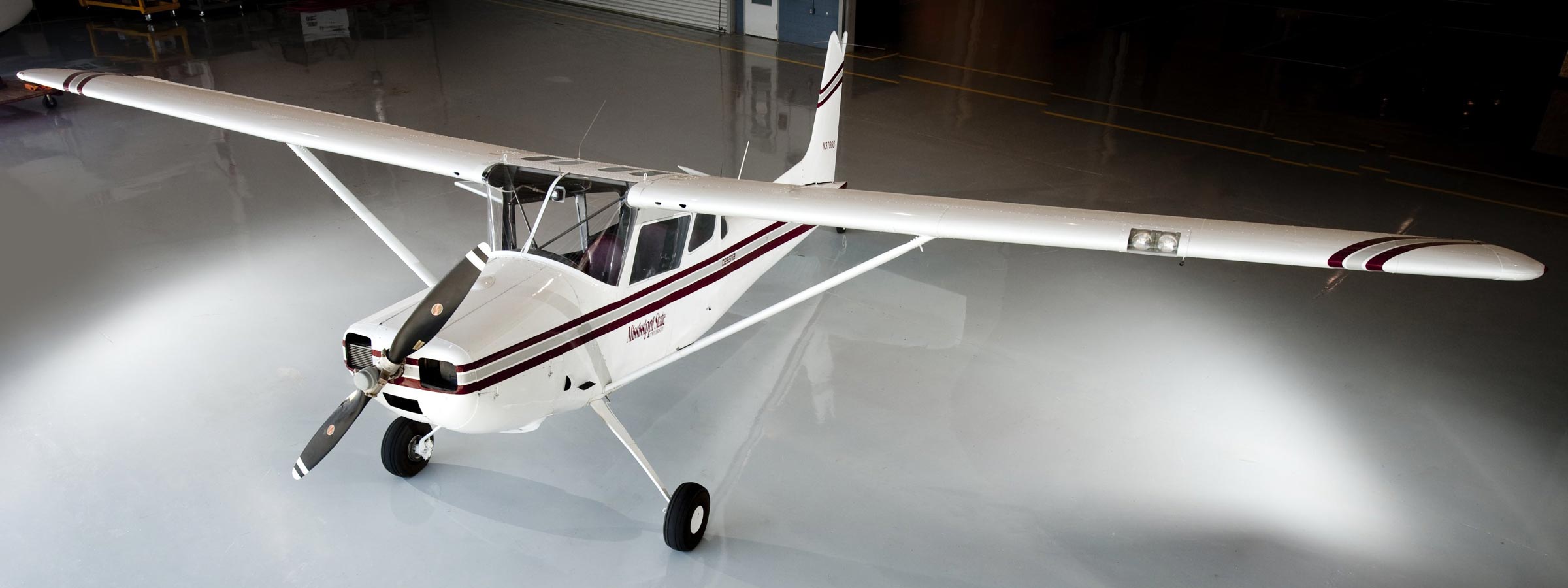
The Cessna L319 is a unique experimental aircraft originally built by Cessna for the U.S. Marine Corps as a forward observer aircraft. This two-place, tandem aircraft was later built in 1957 for Wichita State University for short takeoff and landing (STOL) research. The L319 is powered by an O-470 225 horsepower engine. Since arriving at Raspet, the L319 has been used in a stall prevention study program with NASA and as an aerial photographic aircraft for MSU. Currently the L319 serves as the primary chase aircraft for numerous unmanned aircraft systems (UAS) research efforts.
Build & Performance Specifications
- Length: 25 ft. 9 in.
- Height: 7 ft. 3.5 in.
- Wingspan: 36 ft.
- Engine: Continental O-470 11 Flat Six Piston 225hp
- Empty Weight: 1,614 lbs.
- Max Gross Take Off Weight: 2,400 lbs.
- Max Speed: 113 kts
- Cruise Speed: 100 kts
- Service Ceiling: 20,300 ft. AGL
Raspet Owl OPA
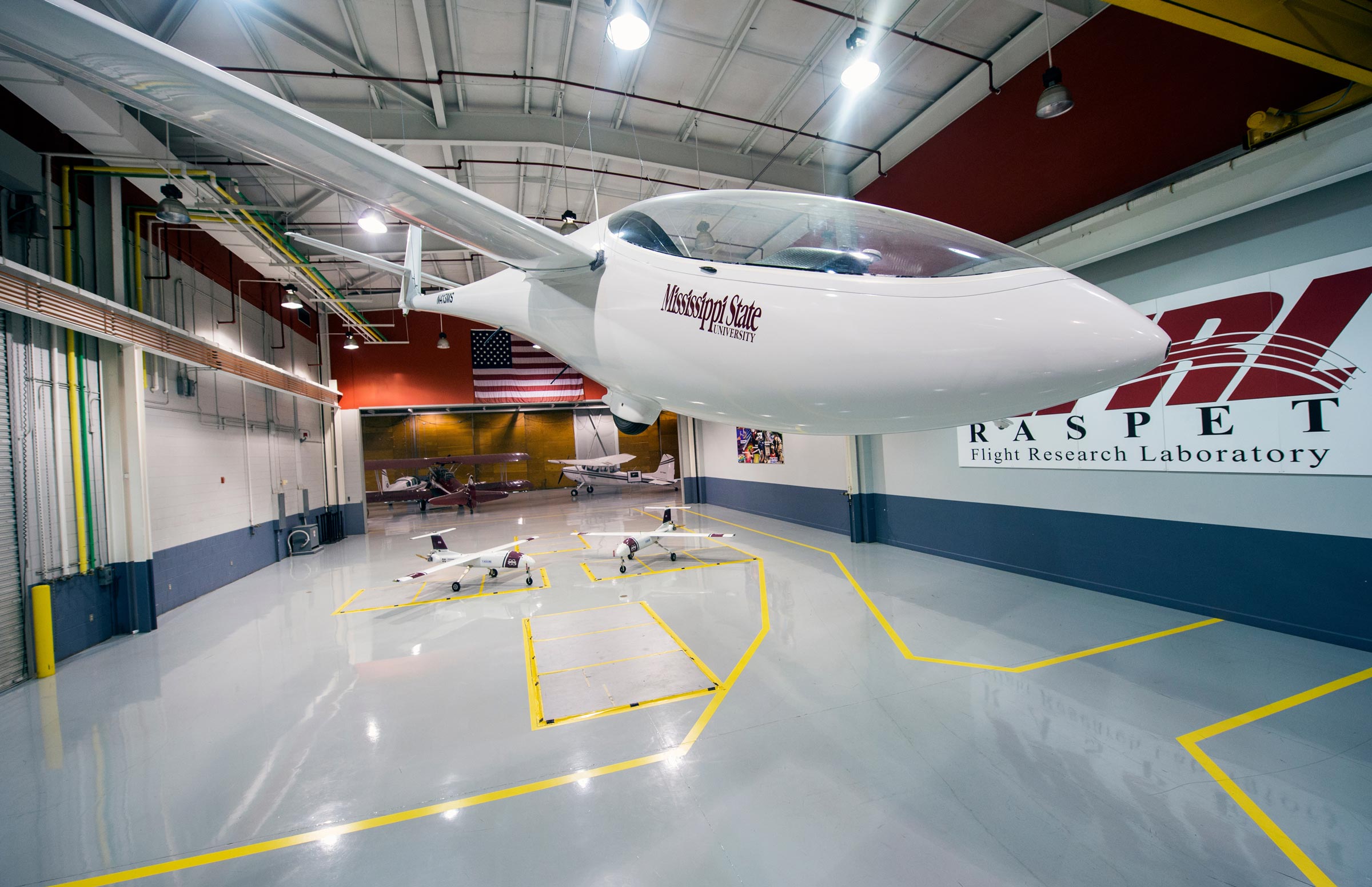
The Owl is an ultralight sailplane designed to be an optionally piloted aircraft (OPA). The Owl is a single-place, all-composite sailplane with L-3 Geneva Aerospace flightTEK® autopilot, Dynon Avionics electronic flight information system (EFIS), and Microair transceiver and transponder. Raspet’s fleet includes two Owl aircraft. The first is configured to be flown autonomously or remotely and has a non-retractable 32hp engine installed above the aircraft fuselage. The second is an unpowered sailplane configuration that is designed strictly for manned flight.
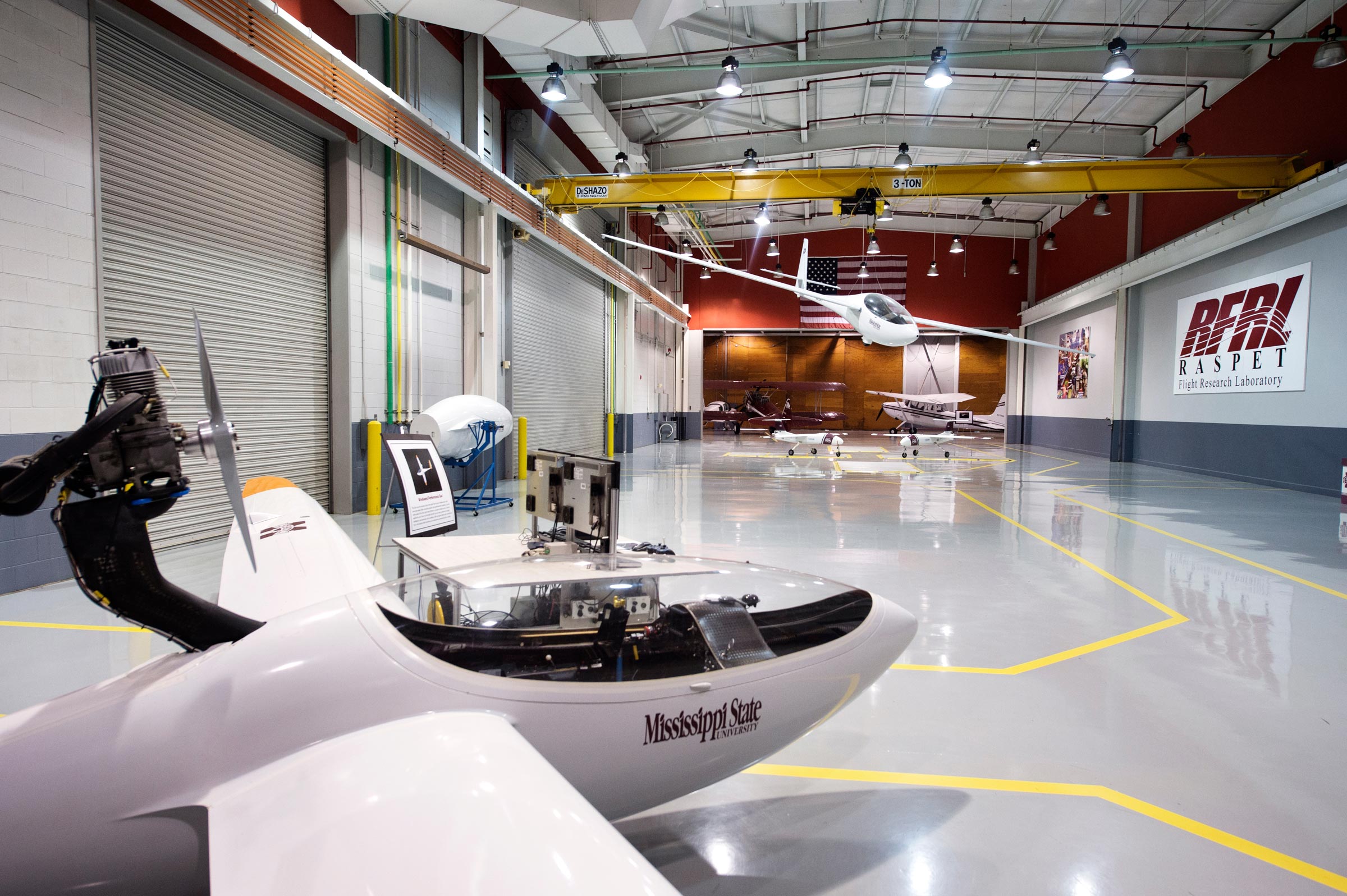
Build & Performance Specifications
- Length: 20 ft. 7.2 in.
- Height: 3 ft. 8 in.
- Wingspan: 37 ft.
- Engine: 32hp
- Empty Weight: 235 lbs.
- Max Gross Take Off Weight: 500 lbs.
- Max Lift/Drag: 50:1 at 55 kts
- Stall Speed: 37 kts